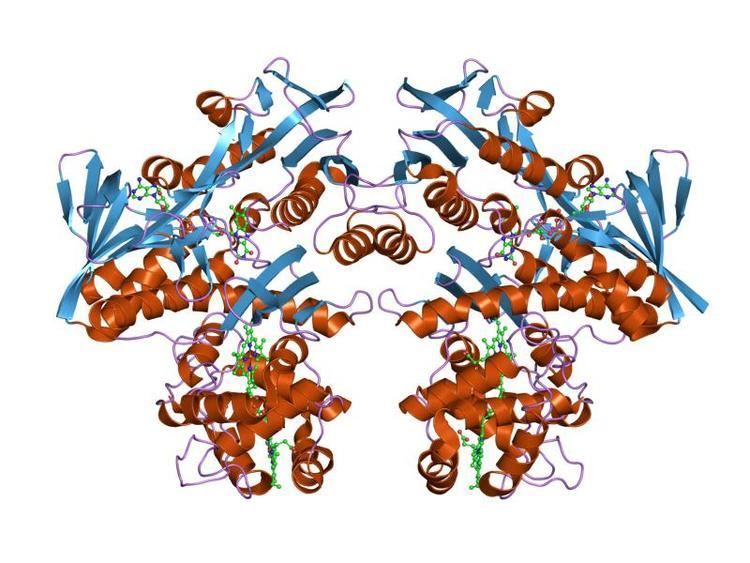Symbol FCSD-flav_bind InterPro IPR015323 SUPERFAMILY 1fcd | Pfam PF09242 SCOP 1fcd Pfam structures | |
 | ||
In molecular biology, flavocytochrome c sulfide dehydrogenase is an enzyme found in sulfur-oxidising bacteria such as the purple phototrophic bacteria Chromatium vinosum. These enzymes are dimers of a flavoprotein and a dihaem cytochrome that carry out hydrogen sulfide-dependent cytochrome C reduction. The dihaem cytochrome folds into two domains, each of which resembles mitochondrial cytochrome c, with the two haem groups bound to the interior of the subunit. The flavoprotein subunit has a glutathione reductase-like fold consisting of a beta(3,4)-alpha(3) core, and an alpha+beta sandwich. The active site of the flavoprotein subunit contains a catalytically important disulfide bridge located above the pyrimidine portion of the flavin ring. The flavoprotein contains a C-terminal domain required for binding to flavin, and subsequent electron transfer. Electrons are transferred from the flavin to one of the haem groups in the cytochrome.
